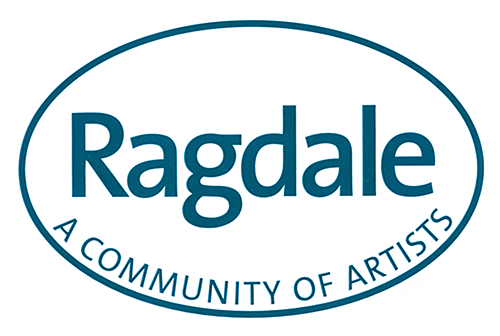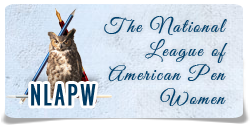Grace Cavalieri
Libbie Rifkin, Career Moves: Olson, Creeley, Zukofsky, Berrigan, and the American Avant-Garde, The University of Wisconsin Press, 2000, 160pp. $16.95 Paper, $37.95 Cloth Library Edition.
Libbie Rifkin shines light on the work of four avant- garde poets who created a poetry culture where they could reign, preeminent. If ever there were a movement in art history that could only “be understood backwards, but must be lived forwards” (to paraphrase Kierkegaard), it was the avant-garde. Now an American institution, avant-gardism can be more fully understood.
Focusing on four major literary figures of the ’50s and ’60s, Charles Olson, Robert Creeley, Louis Zukofsky, and Ted Berrigan, Career Moves guides us through to their eventual prominence. All four poets followed in the heat of the Beat poets, and capitalized on that movement, coming into their own with a fervor which could be described as the making of poetry in service to the self. The term ‘avant-garde’ leads us to think of breaking old forms to create new, thus seeing its practitioners as revolutionaries and iconoclasts. A contrary point made by Rifkin is how imperialistic these avant-gardists were, and how they contrived to manipulate public taste by creating poetry which was doctrinaire. Ezra Pound, more than others, influenced these four, more even than W.C. Williams or Wallace Stevens. Pound’s famous “ego as beak” (to “drive through the material”) was the philosophy Olson and Creeley used to create an empire of solipsistic literature, in defiance of the Academy, at the same time courting the universities to promulgate and sustain their works. Their art was born and breasted of such contradictions.
Arrogance, yes. Self-styled critics and self appointed cultural anthropologists that they were, the facts remain: these are four of the most interesting writers in the history of American poetry. Charles Olson’s projectivism, using breath to determine the line on the page, has changed the reading, writing and teaching of poetry forevermore. Creeley’s magnificent epigrammatic poems established a new morality for word order. Zukofsky’s life long poetic fugues are a testament to experimentation, and Berrigan’s lust for recognition objectified the daily act (Frank O’Hara’s legacy), taking all to a new level of poetic exhibitionism. There is genius in each.
Libbie Rifkin gives us insight into the making of the new poetry. For example, she points to Berrigan’s appropriation of other poets — composition, tone, and language. She refers especially to his imitation of John Ashbery’s poems. One has to believe Ashbery is a saint, completely without ego, for his acceptance of these practices. The book could have uncovered more here for our satisfaction and curiosity, but Rifkin doesn’t go for pure literary gossip. The greater good Berrigan thought, was of course to pay tribute to the hero, Ashbery. The immediate effect, not lost on Berrigan, is that many of us don’t have the means to credit the work properly and so, attribute to Berrigan work which wins the day. Much that followed this, however, is ground-breaking. The small literary magazines that ignored tables of content, authorship of poems etc. are pretty exciting in the creating of a new poetry ego within the pages. Poetic assemblage was born.
Throughout the book we are shown that nothing was written that wasn’t consciously designed to construct a literary reputation. What is different? Looking at today’s poets, most want recognition, few write for obscurity, and fame is certainly the goal. What distinguishes these four poets, then, according to Rifkin, was the dogged authoritarianism in their roles as editors, in their writings and teachings — their “Homosocial “ culture — and the incorporation of traditional works within the text.
The reader always wonders how far away any artist can go without turning back. Not far it seems. It is fascinating to see how heavily Shakespeare and European classical music figure in the work of our four. If anything, I would like to have seen how America’s other avant-garde art forms (visual arts, music, etc.) factored into the manuscripts. We are content to imagine the broken line and off beat syntax as evidence. However these were first the property of the modernists of the ’50s. So what art forms of the time influenced them? We do not see this explicated in their texts.
Career Moves matters largely because the poets, Orson, Creeley, Zukofsky and Berrigan, matter to us. In my generation they are contemporaneous with the love of poetry itself. It’s doubtful that many of us would have been drawn to the ongoing energy of poetry had it not been for these men and their bold innovations and powerful poetic disciplines.
Few scholars have concentrated before on how and when poetry was marketed. In today’s presence of flamboyant PR and endless cultural commerce, we can now see how other “sociopoetic practices” figured. Public consumption is always an end in itself, a manufactured act, yet designers make taste and great poets do also. The study of their ‘career moves’ interests us on all levels, mostly because suspicion of what goes into making people famous is finally satisfied by fact. It is impossible for me to forget that fame is an Italian word for hunger.
Libbie Rifkin’s scholarly explorations and mastery of material combine with a language we had forgotten to expect from our critics, and a prose style we can be grateful for. This means that in the field of literary history Libbie Rifkin has authored a book for us to read and reread, not only in preparation for the classroom but for our own personal fulfillment and pleasure. Besides, who would not be attracted to a mythology of four men who have created a poetry society by their own imaginations of greatness. And who would not want to follow their every career move.




